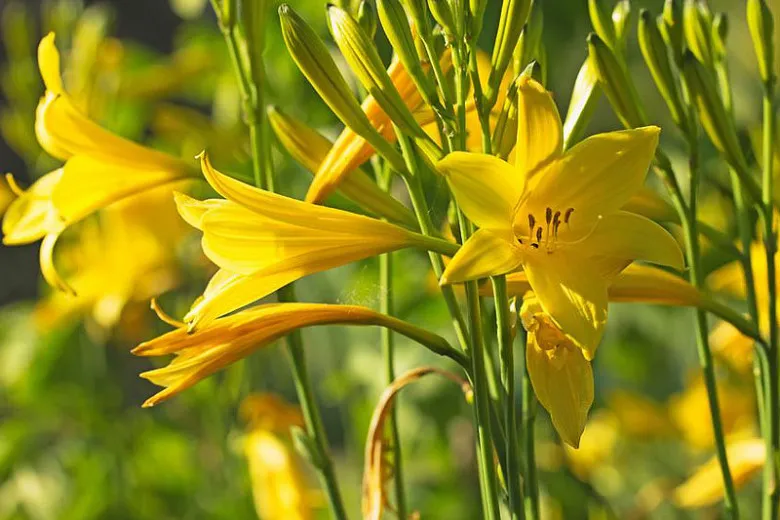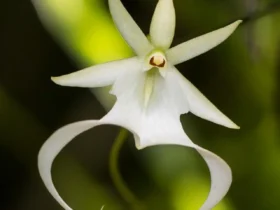Hemerocallis lilioasphodelus, commonly known as Lemon Lily, is a remarkable and fragrant perennial that brings beauty and charm to gardens.

Here are the key features and care guidelines for this stunning plant:
Description:
- Lemon Lily is known for its early bloom period, showcasing its lemon-yellow, trumpet-shaped flowers in late spring to early summer.
- The flowers are relatively small, measuring about 4 inches (10 cm) in width. They emit a strong and delightful fragrance.
- Each flower opens in the early evening and remains open for about 24 hours, closing early the following morning. Sometimes, another flower may replace it on the same flower stalk (scape) the next evening.
- The plant’s arching, strap-shaped green leaves provide texture and color even when the flowers are not in bloom. The foliage is semi-evergreen, enhancing the garden’s appeal.
Size and Growth Habit:
- Lemon Lily is a clump-forming perennial that slowly spreads to form colonies.
- It can grow up to 30 inches (75 cm) in height and spreads slowly via rhizomes, reaching a width of 24 to 36 inches (60 to 90 cm).
Cultural Requirements:
- This Daylily is easy to grow and adaptable to various garden settings.
- It thrives in full sun to part sun conditions.
- Lemon Lily performs well in average, moist, and well-drained soils. It can tolerate a range of soil types but prefers fertile loam.
- The plant is known for its tolerance to heat and summer humidity, although consistent watering is essential to maintain attractive foliage.
Benefits and Uses:
- Lemon Lily is an ideal choice for various garden applications. It can be used in shrub borders, perennial beds, or as ground cover on slopes.
- Container planting near patios allows the fragrance of the flowers to be enjoyed up close.
- The plant’s attractive blooms attract butterflies and hummingbirds, making it a valuable addition to wildlife-friendly gardens.
Toxicity and Pest Resistance:
- While Lemon Lily is toxic to cats, rabbits tend to avoid it. It’s important to be cautious if you have cats in your household.
Maintenance and Care:
- Lemon Lily is generally free from serious pest or disease issues.
- Keep an eye out for potential pests like mites, aphids, thrips, or daylily rust, and take appropriate measures if necessary.
- The best time to plant Lemon Lily is in early fall or early spring.
- After flowering, removing spent blooms and seedpods can improve the plant’s appearance and encourage reblooming.
- In the fall, as the foliage dies back, it’s advisable to remove the dead leaves for a tidier garden appearance.
Origins and Significance:
- Hemerocallis lilioasphodelus is native to China and parts of Europe, including N.E. Italy and Slovenia.
- This Daylily holds historical significance as one of the first daylilies used for breeding new cultivars, contributing to the diversity of daylily hybrids available today.
In summary, Hemerocallis lilioasphodelus (Lemon Lily) is a charming and fragrant perennial that brings early-season beauty to gardens. With its lovely trumpet-shaped flowers, arching foliage, and adaptability to different garden settings, Lemon Lily is a valuable addition to landscapes. Its fragrance, attractive blooms, and ease of care make it a favorite among gardeners seeking to create a delightful and inviting outdoor space.








